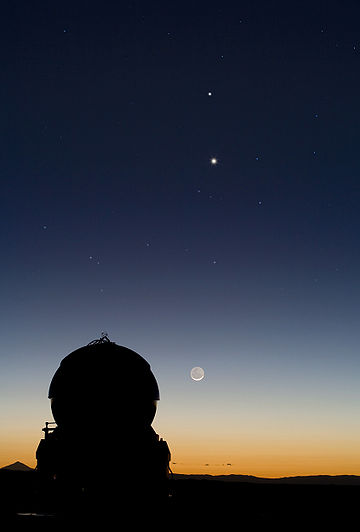Commons:Valued image candidates/Mercury, Venus and the Moon Align.jpg
Jump to navigation
Jump to search
Mercury, Venus and the Moon Align.jpg
| Image |  |
|---|---|
| Nominated by | Cody escadron delta (talk) on 2010-06-30 06:31 (UTC) |
| Scope | Nominated as the most valued image on Commons within the scope: Astronomic conjunction |
| Used in | Global usage |
| Reason | Best in scope. -- Cody escadron delta (talk) |
| Review (criteria) |
Scores: 1. Mercury, Venus and the Moon Align.jpg: 0 <-- 2. 08.12.01 01 Conjuction of the Moon, Venus & Jupiter.JPG: 0 3. Moon and Venus conjunctions.jpg: 0 3. Moon-venus-jupiter-2.jpg: 0 => File:Mercury, Venus and the Moon Align.jpg: Undecided. <-- File:08.12.01 01 Conjuction of the Moon, Venus & Jupiter.JPG: Undecided. File:Moon and Venus conjunctions.jpg: Undecided. File:Moon-venus-jupiter-2.jpg: Undecided. --Ikar.us (talk) 12:38, 11 July 2010 (UTC) |